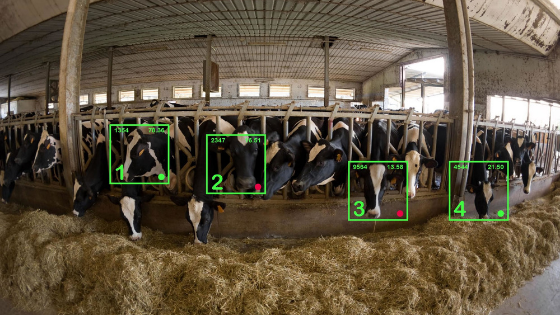We recently spoke with Tyler Bramble, Portfolio Growth Lead at Cainthus. Talking about the future of livestock production, Tyler highlights how Artificial Intelligence, Facial Recognition, and other emerging technologies can help cattle producers improve efficiency and also address challenges facing the global food industry. Here are some of the questions he answered:
How did Cainthus start?
Coming from a small village in rural Ireland and growing up around the family grain business, David and Ross Hunt have a rich background in agriculture.
While running the grain trading company, a constant surprise to both was the lack of data available and used to make big decisions in the world of agriculture. They felt that most of Ag’s big problems could be dramatically improved by farmers having access to affordable digital measurement services.
During a trip to the US in 2010, David met Robin Johnston from Canada, the third founder of Cainthus. Robin had studied computer science and engineering but like the Hunt brothers, he also came from an agricultural background and was happiest when around the animals on the family farm.
Robin’s Dad, a dairy nutritionist, often commented “Do you think you could teach a computer to understand cows?” and from this, an idea began to form.
By mid-2014, the Hunt brothers left the family business and co-founded Cainthus with Robin.
For the three founders, the ultimate goal is to offer farmers affordable digital measurement at full commercial farming scale.
A few years ago no one would have thought that AI would help the industry as conventional as the animal care industry. So what changed and what led to the increasing adoption of AI in animal care?
There are several factors that I see that have allowed for the increased adoption of AI in the animal industry.
Firstly, the fact that you can use AI to turn cheap imaging sensors and processors into powerful general measurement tools is a key factor. This is the concept that Cainthus was founded on – how do we get a digital passive measurement to farmers affordably.
From a labor perspective, there are significant challenges which are helping drive AI driven AgTech. As animal facilities have become larger and are more dependent on an outside, unskilled, shrinking labor force, there are less qualified people that truly have the expertise and training to care for animals. Thus, the development of technologies to replace some of the loss of skilled labor.
With livestock production being capital intensive the pressure to not make a mistake has never been greater. While shrinking margins may seem counterintuitive to drive the adoption of technology, the need to become more efficient has become a necessity for long term success.
Furthermore, the genetic potential of dairy cows has far exceeded our ability to extract their full productive capacity. There are cows producing 75,000 pounds of milk annually yet the average milk production in the USA is likely somewhere closer to 24,000 pounds per cow. While there have also been advancements in nutritional technologies I firmly believe that digital technologies will allow for more intensive management, better data-driven decisions and a more cow/animal-centric approach to management that will allow us to get more of the genetic potential out of the cow.
3) We have recently seen pig farms using Computer Vision to monitor pigs 24/7, 365 days a year. Similarly, some dairy farms are piloting Computer Vision technology to identify health issues in cows. What are some of the adoption challenges? How are farmers taking it?
Yes, there are many exciting developments happening in Computer Vision, particularly in the facial/body/pattern recognition area of production livestock. That being said, there are also many very practical as well as technical challenges with respect to the adoption of this technology. Firstly, on the practical side, there is the needed infrastructure to mount the cameras which comes at a cost. Livestock is typically raised in well maintained but often dirty facilities where you are dealing with water, heat, cold, dust, fly and spider droppings on camera lenses, and even manure. I know from personal experience that cows are curious creatures and if your cameras are positioned too low they will lick it, rub it and eventually destroy it. Additionally, cows don’t stand still for photos so being able to capture an individual animals pattern can be challenging.
One basic technical challenge is that many livestock production facilities are out in the country and have less than adequate internet availability and/or speed. This creates a challenge of getting the data off of the farm. Farms also tend to have a fair bit of dust which might be excessive even inside the office which can create issues for computers, servers, etc.
Most of the dairymen that I have had the pleasure of working with on our technology are early adopters and are very creative in how they solve or tackle problems. They are eager to deploy our technology and have been great at helping us solve some of the aforementioned challenges. Additionally, they have been great at sharing their ideas in ways that we hadn’t thought of using our technology.
4) How is Facial Recognition for animals different from Facial Recognition for humans? What are some of the challenges involved?
With humans we only look at faces because stubbornly, we refuse to walk around naked – cows don’t have this issue. While livestock doesn’t cover up with clothes they do have some uniques challenges which is why we look at more attributes than simply the face of the cow. One challenge with livestock is that they have a significant amount of definition ie. long head on a cow, a snout on a pig, etc. Even consider the phenotypic differences of Bos indicus vs Bos taurus cattle. From a practical standpoint when you are working within a breed, say Holstein cows on a commercial dairy there are management practices that also need to be overcome. For example, when cows are being checked for pregnancy it is relatively common practice to put a green or orange chalk mark down the face of the cow to indicate she was checked, pregnant, needs to be bred, etc. This relatively benign practice creates some challenges if you are reliant on pattern differences of the face to properly ID the animal. Finally, animals are unpredictable and don’t know to look at the camera so camera placement is important to ensure you can capture good images.
5) How accurate are these solutions? How do you reduce false positives?
We train up our system and improve accuracy by giving it thousands of examples of particular issues to improve its ability to spot these issues with greater consistency than a human can. Every time a farmer gives us feedback/validation that a report was either accurate or inaccurate, that enables us to train up the system even further. One of the advantages of using Computer Vision is that the accuracy will continue to improve the more you use it and the wider commercial deployment it has. Scale matters. You reduce false positives by marking a false alert as a false positive, then the algorithm will know not to do this in the future.
6) Do you think the animal care industry is ready for such high tech solutions? How soon do you see small farms adopting these solutions to improve animal well-being? Or is it only for large farms?
I think the livestock industry is absolutely ready for AI driven high tech solutions. I know with our own technology that rarely a day goes by that I don’t receive interest or requests for our technology. There seems to be good interest from small European dairies with 100 cows to the world’s largest dairies. I find the people that are contacting me are actively engaged in their dairy’s operation and are looking for ways to improve their efficiency and help ensure their dairy is sustainable for the next generation. Small and large dairies alike are looking for a technology that allows for more intensive management, earlier detection of health issues and the ability to measure things that they couldn’t measure and manage without the technology.
7) How is Cainthus helping the dairy and beef industry in improving health, reproduction and environmental challenges?
At Cainthus we are developing the most advanced technology for dairy farms today; technology that is transformational for animals and farmers. Using computer vision and artificial intelligence to identify health, reproductive and environmental changes early on, we translate visual information into actionable data.
Our technology is passive and monitors cows 24/7 thus allowing us to monitor individual animal needs and intervene early if needed. Helping ensure the cow never runs out of food, or water or is in pain or discomfort helps maximize milk production, improves feed efficiency, maximizes water intake, and enhances animal health, comfort, and wellbeing.
8) How do you see the industry shaping up? What opportunities or challenges do you see the future holds for the adoption of advanced technology in farms?
The major challenges that I see today for the larger food industry are:
- food safety
- labor shortages, and
- finite resource availability
Technologies that can solve both producer issues while improving efficiency and solves challenges facing the global food industry will be successful.
Furthermore, as broadband continues to develop and gets better in rural communities, IoT will improve and I feel the adoption of many AI driven technologies will be adopted. Additionally, increased autonomous intervention (like milking robots) will likely increase due to rising labor costs and disease vector risk associated with human contact.
Tyler Bramble talks about Cainthus and the future of livestock production
We recently spoke with Tyler Bramble, Portfolio Growth Lead at Cainthus. Talking about the future of livestock production, Tyler highlights how Artificial Intelligence, Facial Recognition, and other emerging technologies can help cattle producers improve efficiency and also address challenges facing






